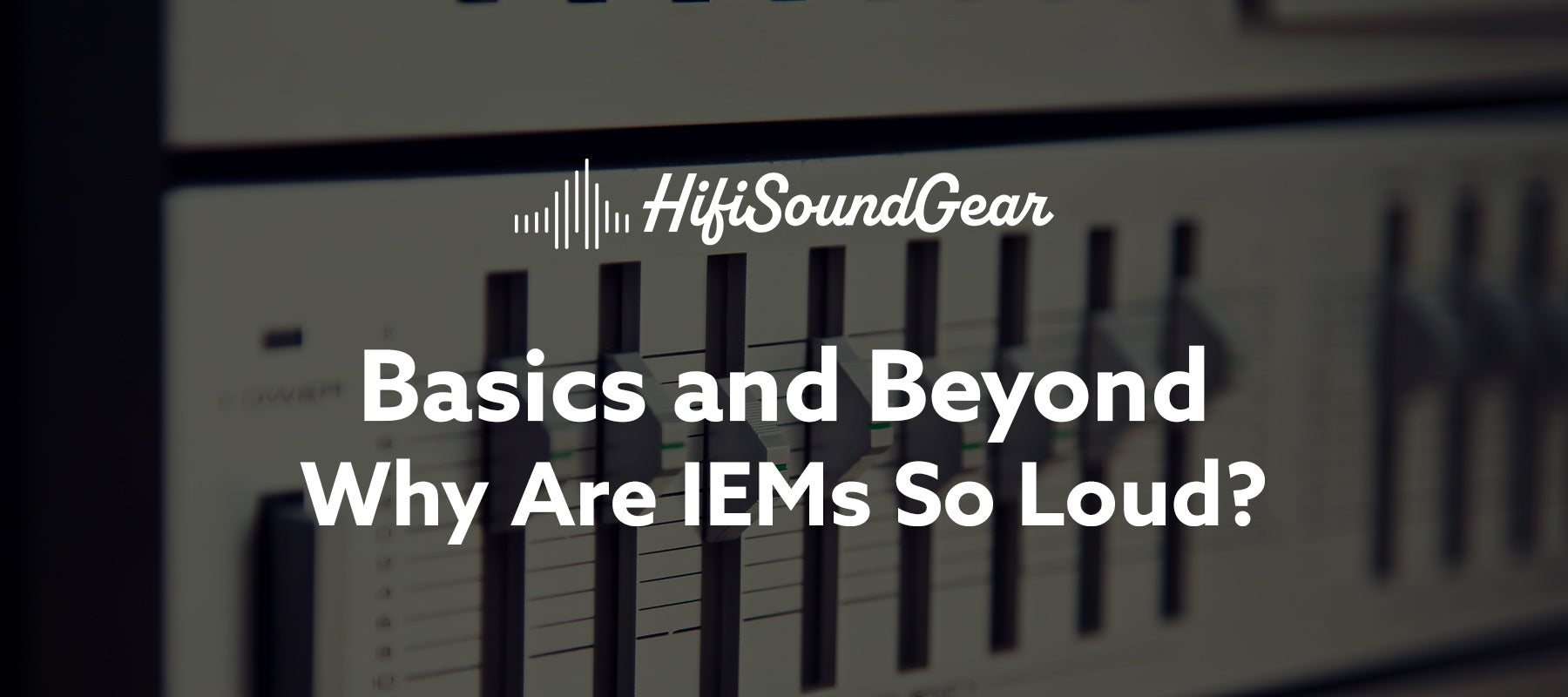
Why Are IEMs So Loud?
Ever pulled out your IEMs in a panic, wondering how something so tiny could unleash such thunderous sound? You're not alone!
In-Ear Monitors (IEMs) can produce sound pressure levels exceeding 120 decibels – that's louder than a jackhammer at close range! But what's the secret behind these miniature sonic powerhouses?
Let's dive into the fascinating world of acoustic engineering that makes your favorite IEMs capable of rattling your eardrums (though we hope you're not pushing them that far!).
The Physics Behind IEM Volume Levels

Think of your ear canal as nature's perfect amphitheater, and IEMs are the acoustic architects that have mastered this space. The sealed design of IEMs creates a pressurized acoustic chamber that works like a microscopic concert hall, perfectly tuned to your ear's dimensions. This isn't just clever engineering – it's acoustic wizardry at its finest!
When your IEM's driver moves, it's not just pushing air around willy-nilly. The confined space of your ear canal amplifies this movement dramatically. It's like trying to splash in a bathtub versus an ocean – the same movement creates much bigger waves in a smaller space. This confined space advantage means IEM drivers don't need to move much to create impressive sound pressure levels.
Driver Efficiency and Power Requirements
Here's where things get really interesting (and a bit mind-bending). Balanced armature drivers, found in many high-end IEMs, can achieve incredible efficiency ratings of up to 110dB/mW. To put that in perspective, that's like getting stadium-level volume from less power than it takes to light up a tiny LED!
Why so efficient? It's all about design. Balanced armature drivers use a lightweight armature that pivots between two magnets, creating movement with minimal energy input. Think of it as the acoustic equivalent of a master chef's knife – precise, efficient, and incredibly effective in the right hands.
The Critical Role of Proper Seal

Ever notice how your IEMs suddenly sound thin and weak when they're not seated properly? That's no coincidence! A proper seal is the cornerstone of IEM performance, acting like the foundation of a sonic skyscraper. Without it, your bass response pulls a disappearing act worthy of a Vegas magic show.
The seal creates a controlled acoustic environment where your IEMs can work their magic. It's like having a mini recording studio in your ear canal, complete with perfect acoustic treatment. Different tip materials – silicone, foam, or hybrid – each bring their own flavor to this acoustic recipe, affecting both isolation and sound presentation.
Understanding IEM Sensitivity Ratings

When you see an IEM rated at 105dB/mW, what does that actually mean? Sensitivity ratings tell us how efficiently an IEM converts electrical power into acoustic power. Higher sensitivity means more volume from less power – it's like getting more miles per gallon in your car, but for sound!
This efficiency explains why your smartphone can drive most IEMs to ear-splitting levels, while larger headphones might struggle to reach the same volume. IEMs typically offer sensitivity ratings between 95-110 dB/mW, making them some of the most efficient acoustic transducers in the consumer audio world.
Safe Listening Practices with High-Output IEMs

With great power comes great responsibility (sorry, couldn't resist!). The ability of IEMs to produce high sound pressure levels means we need to be extra careful about our listening habits. The general rule of thumb follows the 80-90 rule: no more than 80 decibels for extended listening, or 90 decibels for no more than 30 minutes.
Modern smartphones often include volume limiting features, and many professional IEMs come with adjustable attenuators. These aren't just fancy accessories – they're your ears' best friends in a world of increasingly powerful personal audio devices.
Conclusion
The impressive output capabilities of IEMs aren't just a happy accident – they're the result of clever acoustic engineering that takes advantage of the ear's natural architecture. By combining efficient drivers, sealed designs, and precise placement, manufacturers have created pocket-sized powerhouses capable of delivering concert-level sound directly to your eardrums.
Remember, though – just because your IEMs can get incredibly loud doesn't mean they should. Treat these acoustic marvels with respect, and they'll reward you with years of intimate, detailed, and yes, potentially very loud musical experiences.
Elevate Your Listening Experience With These Related Articles
Enjoyed this article? Feel free to check out these related topics!

